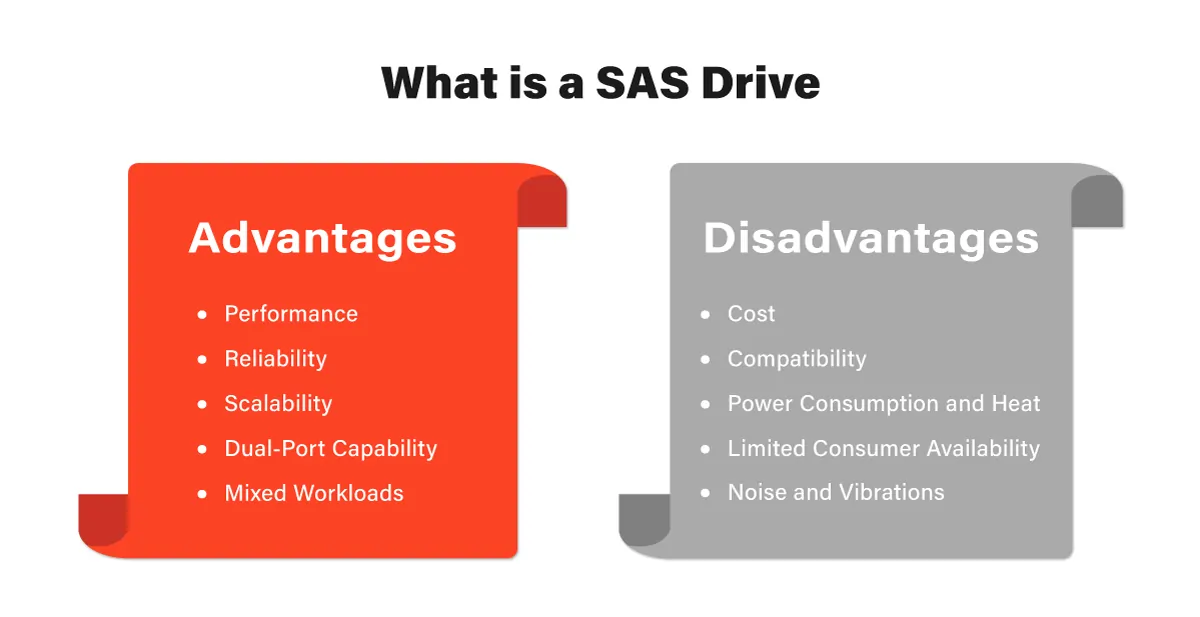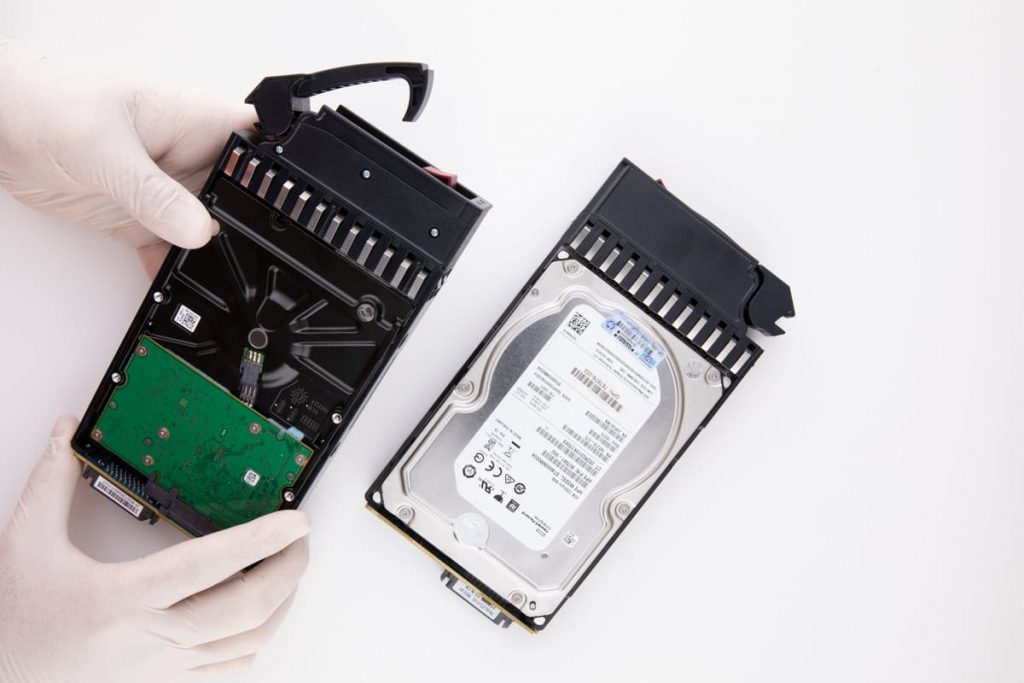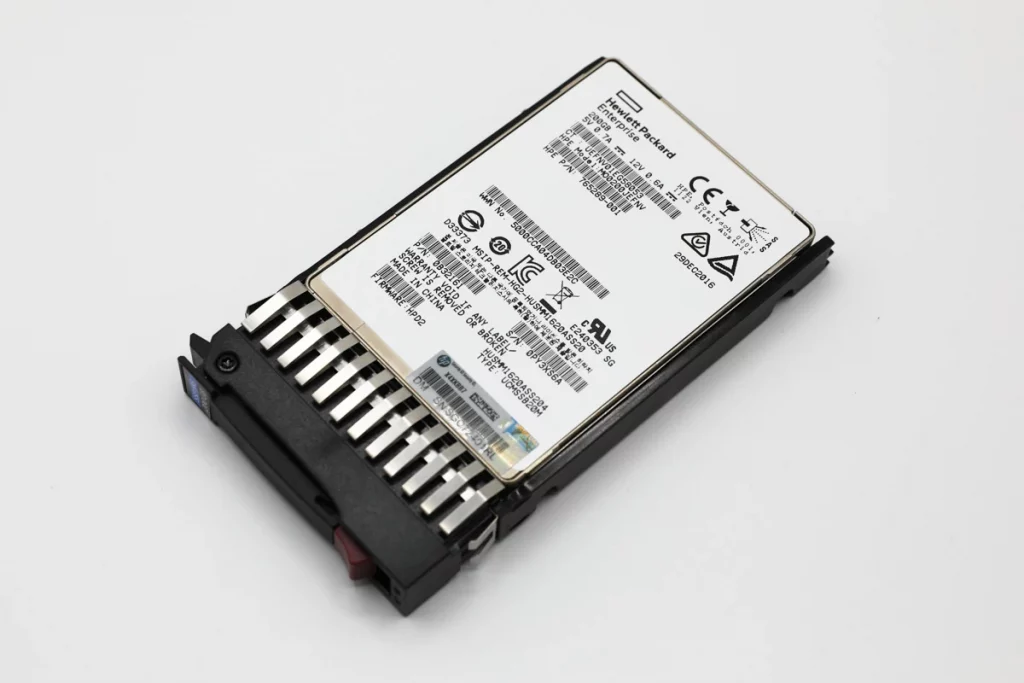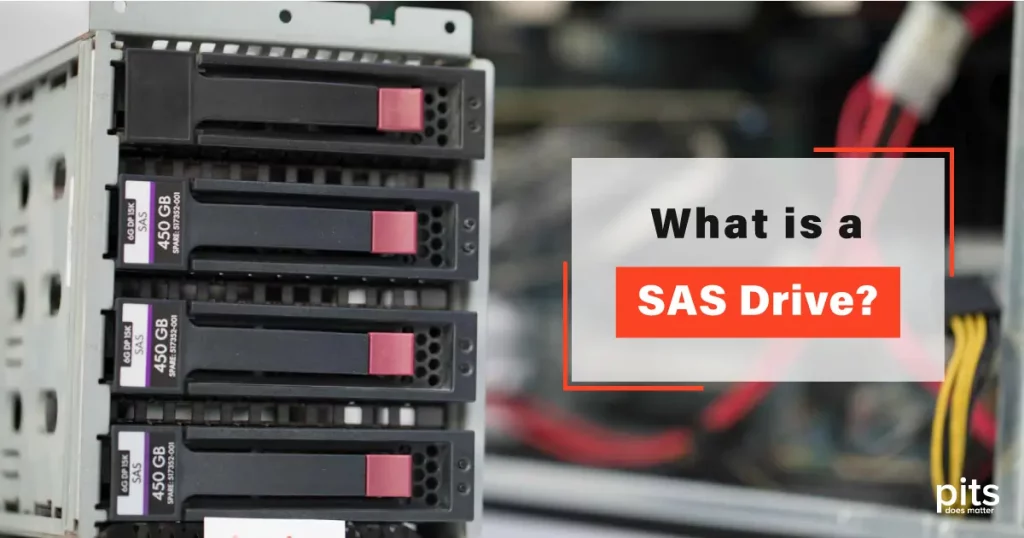If you are looking to learn more about SAS hard drives, you have come to the right place. In this beginner’s guide, our team cover everything you need to know about SAS hard drives, including their transfer speeds, storage capacity, and compatibility with advanced servers. In this beginner’s guide, we will help you understand what SAS hard drives are, how they differ from SATA hard drives, and why you should consider using them.
What is SAS?
A SAS drive, also known as a Serial Attached SCSI drive, is a type of disk drive that uses a Small Computer Systems Interface (SCSI) for data transfer. Hard drives with SAS interface are similar to SATA (Serial Advanced Technology Attachment) drives, but they offer faster transfer speeds, larger storage capacities, and improved reliability compared to SATA drives.
SAS drives are commonly used in data-intensive applications like servers, data centers, and other enterprise-level systems. They are also available in larger storage capacities, ranging from 1TB to 16TB or more, which makes them an ideal choice for businesses or individuals who require a large amount of data storage.

How SAS differs from SATA?
SAS and SATA are both interfaces used to connect storage devices like hard drives and solid state drives to a computer’s motherboard. The primary difference between SAS and SATA is the data transfer rate and reliability.
SAS drives use a small computer systems interface (SCSI) protocol, which enables them to transfer data faster and more reliably than SATA drives. SAS drives have a transfer speed of up to 12 gigabytes per second (GB/s), while SATA drives only support up to 6 GB/s. SAS drives also have a longer time between failure than SATA drives, making them more reliable for enterprise use.
This makes them a great choice for enterprise-level systems that require high performance and fast data transfer speeds. In addition to their faster data transfer rates, SAS drives offer more storage capacity than SATA drives.
SAS drives are available in larger capacities, ranging from 1TB to 16TB or more, which means they can store more data than SATA drives. This makes them ideal for businesses or individuals who require a large amount of data storage.

Another key advantage of SAS drives is their longer time between failures (TBF). SAS drives are designed to operate reliably for a longer period of time than SATA drives.
The TBF of a SAS drive is typically measured in millions of hours, which makes them an ideal choice for businesses that require constant uptime and data availability.
Boosting the Performance with SAS Expansion Card
When it comes to boosting the performance of your computer, a SAS Expansion Card can be the perfect solution. For those unfamiliar, SAS Expansion Cards are specialized hardware cards designed to increase your computer’s performance, particularly in storage, networking, and back-end computing. These cards are easy to install and configure, providing a cost-effective solution to the need for improved performance.
Storage
Storage is especially important when it comes to SAS expansions. With the right card, you can increase the capacity of your hard drives to store more data; this can be particularly useful for those who work with large files or databases. Additionally, you can use SAS Expansion Cards to add additional drives, so that you can have faster access to data that you use frequently
Network
Regarding networking, a SAS Expansion Card can be a great way to ensure your connection is running smoothly. By allowing you to extend the reach of your network, you can ensure that everyone in the office can access the same data, no matter where they are.
Back-End Computing
Finally, the back-end computing capabilities of a SAS Expansion Card are just as important. By adding additional processing power to your computer, you can have faster response times and more efficient and reliable operations. This is especially important if you are running a business or using your computer for high-end applications such as graphics or animation.
How to Choose the Right SAS Hard Drive?
When choosing a SAS hard drive, there are several factors you should consider, including storage capacity, data transfer rate, and the time between failures. It is also important to choose a drive that is compatible with your computer’s motherboard and supports the type of SAS connectors you need. Factors You Should Consider:
Storage Capacity
The storage capacity of the SAS hard drive is an important factor to consider, especially if you are using it for enterprise-level systems or data centers. Depending on your needs, you may require a SAS hard drive with a larger storage capacity, such as 4TB or 8TB, to accommodate your data storage needs.
Data Transfer Rate
The data transfer rate is another important factor to consider when choosing a SAS hard drive. The transfer rate of a SAS drive is measured in gigabytes per second (GB/s). If you are using the drive for data-intensive applications, such as video editing or gaming, you will want a SAS drive with a high transfer rate to ensure that your data is transferred quickly and efficiently.
Time Between Failure
The time between failure (TBF) is a measure of a drive’s reliability. It refers to the average amount of time that a driver can be used before it fails. SAS drives typically have a longer TBF than SATA drives, making them more reliable for enterprise use. When choosing a SAS drive, look for one with a high TBF to ensure that it will last for a long time and provide reliable data storage.
Compatibility
It is important to choose a SAS drive that is compatible with your computer’s motherboard and supports the type of SAS connectors you need. Different SAS drives have different connector types, so it is important to make sure that the drive you choose is compatible with your computer’s SAS connectors. If you are unsure which SAS drive is compatible with your computer, consult your computer’s manual or contact the manufacturer for guidance.

SAS hard drives are a high-performance and reliable option for personal computers, enterprise-level systems, and data centers. They offer faster data transfer rates, higher storage capacities, and longer time between failures than SATA drives.
By understanding the differences between SAS and SATA drives and knowing what to look for when choosing a SAS drive, you can make an informed decision on which one is right for you.
Frequently Asked Questions
What is a SAS drive?
SAS stands for Serial Attached SCSI (Small Computer System Interface). SAS drives are high-performance storage devices that use the SCSI command set for data transfer. They are designed for enterprise-level storage systems and provide a reliable and scalable solution for demanding data storage requirements.
How do SAS drives differ from SATA drives?
SAS drives differ from SATA (Serial ATA) drives in several ways. SAS drives offer higher performance, better reliability, and more advanced features compared to SATA drives. SAS drives are commonly used in server environments where high-speed data access, data integrity, and fault tolerance are crucial.
What are the key benefits of using SAS drives?
SAS drives offer several benefits, including faster data transfer rates, higher reliability, better error recovery, and improved scalability. They are designed for heavy workloads and provide enhanced performance for enterprise-level applications, such as databases, virtualization, and data-intensive tasks.
Can SAS drives be used interchangeably with SATA drives?
SAS drives are not directly interchangeable with SATA drives, as they use different interfaces and command sets. However, some SAS controllers and backplanes can support both SAS and SATA drives, allowing for mixed drive configurations. It is essential to check the compatibility of the system and drives before installation.
What are the available capacities of SAS drives?
SAS drives are available in various capacities, ranging from small sizes suitable for desktop systems to large capacities suitable for enterprise-level storage arrays. The capacity options for SAS drives continue to increase as storage technology advances, allowing for greater storage capabilities.
